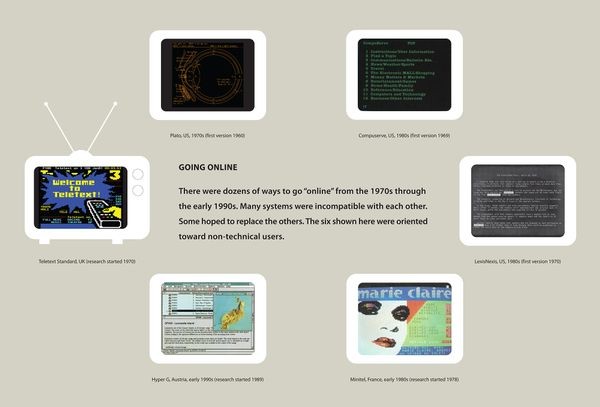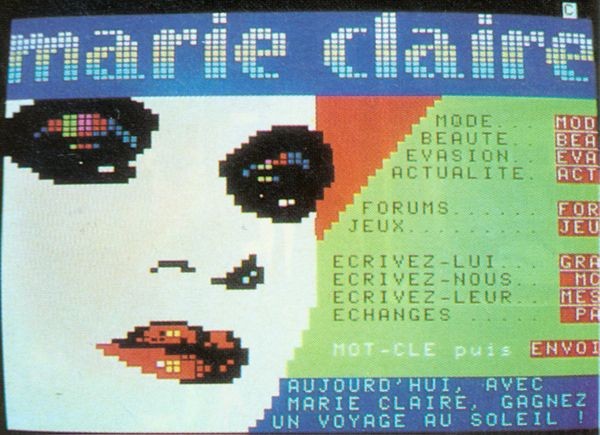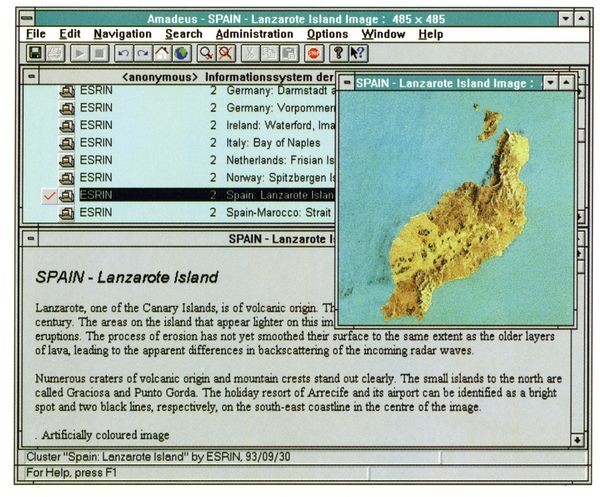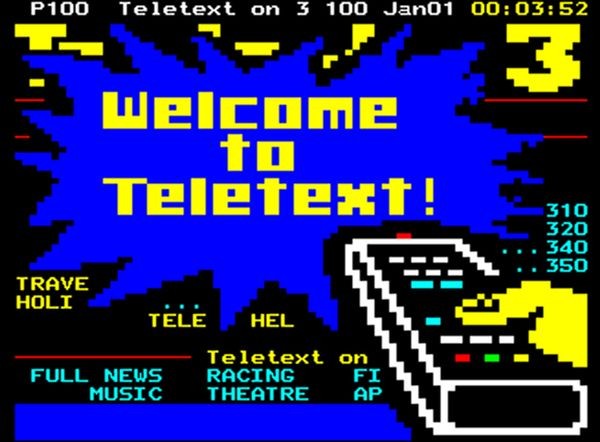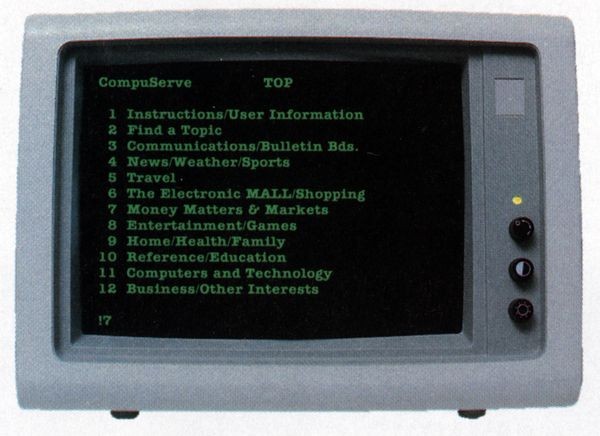Walled Gardens
Going Online
There were dozens of ways to go "online" from the 1970s through the early 1990s. Many systems were incompatible with each other. Some hoped to replace the others. The six shown here were oriented toward non-technical users.
Walled Gardens
By the 1980s, tens of millions worldwide were using networked information systems. But most of these were “walled gardens” with separated communities of users.
Some were limited to subscribers; others divided nationally or by computer skills. Their astonishing variety created a laboratory for Web features now commonplace…and others still awaiting adoption.
Minitel screenshot
At its peak in the 1980s and 1990s Minitel offered sites for everything from classified ads, to news, to official government forms and stock quotes. A key profit center was adult content and chat (“Minitel rose”), heavily advertised….and taxed.
View Artifact DetailPlato
Between 1960 and the early 1980s, the Plato courseware system pioneered many features of online information systems and communities. It also spun off hardware and software innovations.
View Artifact DetailHyper-g
Hyper-g was headed by Hermann Maurer, who had done the earlier MUPID hyperlinked videotex system. It offered far more sophisticated hypertext features than the Web, including two-way links and classification of documents, but required a greater commitment of time and money to set up.
View Artifact DetailTeletext
Invented in the UK, Teletext broadcasts started in 1974 and initially required special set top boxes. By the 1980s most European TVs had teletext capability built in. Teletext started going digital in the 2000s along with TV in general.
View Artifact DetailCompuserve
CompuServe and competitors offered a mix of content similar to the overall Web today; user-generated (discussion groups, classified ads), commercial news and services, and communication (email, chat).
View Artifact DetailLexisNexis
The LEXIS legal database grew out of a 1967 experiment by the Ohio State Bar. In 1980 it was joined by the NEXIS news database. LexisNexis later became a paid Web service.
View Artifact Detail